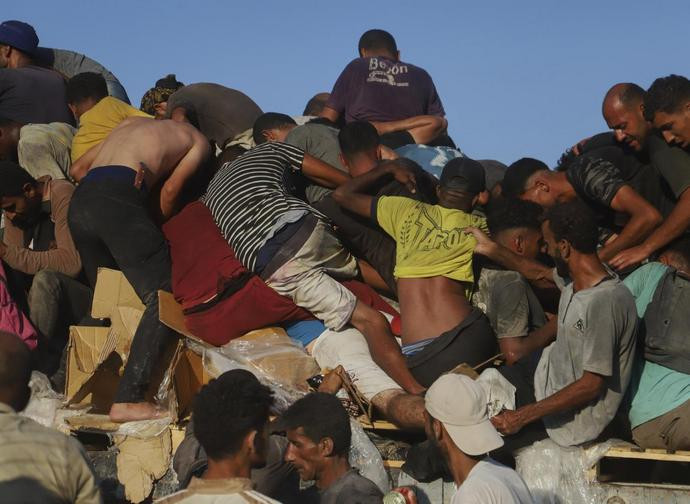‘Operation Hasbara’: How Israel Distorts the Issue of Hunger in Gaza
The use of hunger as a weapon of war is an undeniable reality, but the Israeli government runs disinformation campaigns designed to create enough doubt to prevent people from becoming outraged.

Retouching a photo or correcting dozens of images circulating on the internet is very easy. Modifying thousands of photographs or videos is certainly more complicated. Sometimes it is impossible. This is how, in the course of the twenty-two-month-long conflict with Hamas, Israel has created a subtle, lethal and insidious 'war machine', one of the most dangerous yet bloodless. We are talking about 'Operation Hasbara', which means 'to explain', but which, in the minds of its creators, has a very different meaning: to erase, deny, and influence public opinion. It is a method that could be described as Orwellian, not just refuting and discussing facts, but denying reality and what is there for all to see.
How many times have we heard Prime Minister Benjamin Netanyahu claim that the inhabitants of the Gaza Strip are not starving? And how many times have we heard ultra-Orthodox and ultra-nationalist ministers Itamar Ben Gvir and Bezalel Smotrich say that humanitarian aid, intended to feed Gaza's population of over two million, must be blocked? Many, many times.
The well-oiled system comes into play with the deadly 'weapon of disinformation'. With the complicity of government officials who speak perfect English, news is spread to the Western media. An example? When famine is alleged in Gaza, it is claimed to be a Hamas invention; according to this narrative, the terrorist group has deceived health workers, Médecins Sans Frontières and other humanitarian agencies, while Gazans simply suffer as a result of the bombings.
Another example: Recently, the US newspaper the New York Times published a photograph of an emaciated boy named Mohammad Zakariya Ayyoub al-Matouq. Mossad sources told friendly media outlets that the boy was not dying of starvation, but of a serious illness. The next day, the newspaper 'corrected' the article, explaining that sick children were being denied not only medical care, but food as well.
This is a tactic that has been used in the past. If publications do not defend Israel, the reaction is swift: a barrage of phone calls and messages are sent to newsrooms to discourage the author. But that's not all: on social media, the author is publicly criticised. These tactics are designed to deter people from reporting the truth. So why does Israel not allow foreign journalists to enter Gaza and verify what is really happening? And why must the few who do enter stay within the designated perimeter and follow the 'recommended' guidelines?
The Israeli government's goal, led by Benjamin Netanyahu, is clear: not to persuade the international public that there is no hunger in Gaza, but to create enough doubt to prevent outrage. If the facts are confused, the pressure on Israel diminishes.
Photos showing hundreds of people with pots in their hands looking for a ladle of soup or flour have broken through the wall of silence erected by false propaganda. These images cannot be altered by any digital technique. They show how the Israeli government is using hunger as a weapon to suppress the inhabitants of the Gaza Strip.
This famine will never be erased from history. In fact, the situation is likely to worsen due to the recent offensive ordered by the prime minister.




